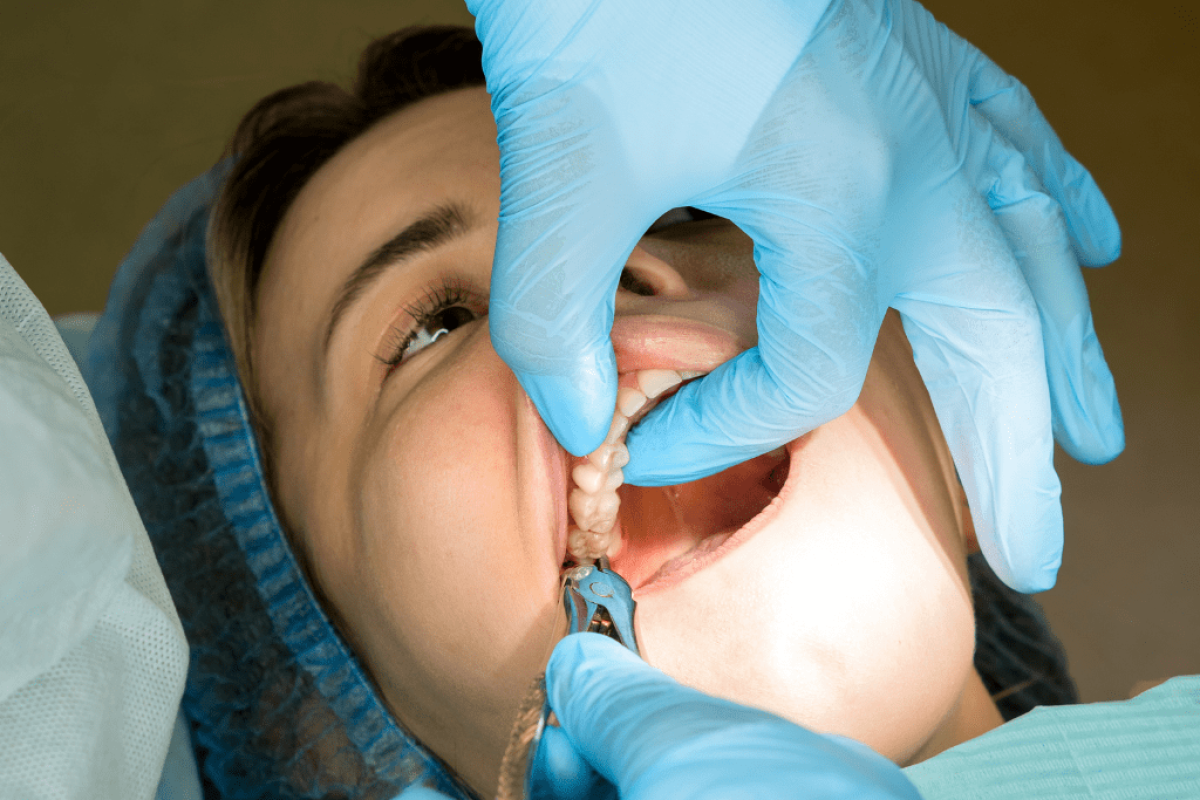Dry Socket After Wisdom Tooth Removal: How To Prevent It
Wisdom tooth removal is a common dental procedure, often performed to relieve pain, prevent overcrowding, or address impacted teeth. While the procedure is generally safe, one of the most common post-extraction complications is dry socket. If you are considering tooth removal in Islamabad, understanding dry socket, its causes, prevention, and treatment is essential for a smooth recovery. By following proper care and guidance from your dentist, you can significantly reduce the risk of this painful condition.

What is Dry Socket?
Dry socket, or alveolar osteitis, occurs when the blood clot that normally forms in the tooth socket after extraction becomes dislodged or dissolves before the wound heals. This exposes the underlying bone and nerves, leading to severe pain and delayed healing. Symptoms often appear 2–4 days after extraction and may include: Severe, throbbing pain at the extraction site
Pain radiating to the ear, jaw, or temple
Bad taste or odor in the mouth
Visible empty socket where the tooth was removed
Dry socket is more common after wisdom tooth extraction, particularly lower molars, due to the complexity of the procedure and difficulty in keeping the area clean.
Why Does Dry Socket Happen?
Several factors can increase the risk of dry socket: Smoking or using tobacco products
Drinking through straws in the first few days
Poor oral hygiene after tooth removal
Trauma or excessive rinsing of the extraction site
Previous history of dry socket
Certain medications or medical conditions affecting healing
By understanding these risks, patients can take proactive steps to prevent dry socket after wisdom tooth removal.
How Can Dry Socket Be Prevented?
Prevention is the key to avoiding dry socket. Your dentist will provide specific post-operative instructions, but general tips include: Avoid Smoking and Tobacco: Nicotine delays healing and may dislodge the blood clot.
Do Not Use Straws: Suction can remove the blood clot from the socket.
Maintain Gentle Oral Hygiene: Brush teeth carefully and rinse with a prescribed antiseptic mouthwash.
Follow Dietary Restrictions: Eat soft foods and avoid chewing near the extraction site.
Rest and Avoid Excessive Activity: Strenuous exercise may affect healing.
Table: Dry Socket Quick Facts Aspect
Details
Definition
Loss of blood clot in extraction site exposing bone
Common Cause
Dislodged clot, smoking, trauma, infection
Symptoms
Severe pain, bad taste, exposed socket
High-Risk Teeth
Lower wisdom teeth
Prevention
Avoid smoking, straws, follow dentist instructions
Treatment
Medicated dressing, pain management, follow-up care
What Are the Signs of Dry Socket?
Recognizing dry socket early can prevent complications. Key signs include: Intense throbbing pain that starts a few days after tooth extraction
Pain radiating to ear, eye, or temple on the same side
Foul smell or taste from the extraction site
Visible empty socket without a blood clot
If you notice these symptoms, contact your dentist immediately. Prompt treatment can relieve pain and prevent further complications.
What is Dry Socket Treated?
Treatment for dry socket focuses on pain management and promoting healing. Typical approaches include: Cleaning the socket to remove debris
Placing a medicated dressing to protect the exposed bone
Prescribing pain medication or anti-inflammatory drugs
Advising gentle oral hygiene and follow-up visits
Most cases heal within 7–10 days with proper care, but ignoring symptoms may lead to infection or prolonged discomfort.
Reviews: Real Experiences
“After my wisdom teeth removal, I developed dry socket because I didn’t follow the post-care instructions properly. My dentist treated it quickly, and now I know the importance of following their advice.”
“I was nervous about tooth removal in Islamabad, but my dentist explained how to avoid dry socket. I followed the instructions carefully and recovered without any issues.”
“The pain from dry socket was intense, but the medicated dressing worked wonders. The staff guided me on proper aftercare, and my healing was smooth afterward.”
Can Dry Socket Be Avoided Completely?
While dry socket cannot always be prevented, adherence to your dentist’s instructions significantly reduces the risk. Factors like smoking, poor oral hygiene, and certain medications increase susceptibility, but careful care after extraction is highly effective.
When Should You Contact Your Dentist?
Contact your dentist immediately if: Pain worsens 2–4 days after extraction
You notice foul odor or taste
You see exposed bone in the extraction site
You develop fever or swelling
Prompt attention ensures proper treatment and reduces recovery time.
Conclusion
Dry socket is a common but preventable complication of wisdom tooth removal. Understanding its causes, recognizing early symptoms, and following post-operative care instructions are crucial steps in ensuring a smooth recovery. By taking preventive measures and seeking professional guidance, patients can enjoy a pain-free recovery and protect their oral health. Whether it’s your first wisdom tooth extraction or a complex surgical removal, being informed helps you avoid unnecessary discomfort.
Contact Us
Address : Office Number LG 20 - 21 Interlace Plaza I-8 Markaz Islamabad
Phone : +92 333 5705871
Email : info@glamorousclinic.com.pk